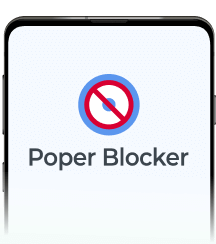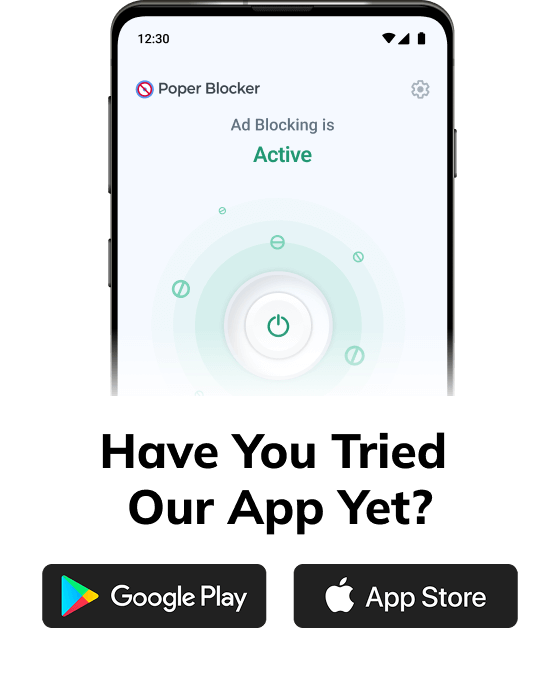Why so much talk about pop-ups on websites? Is it a helpful element or should it be avoided? Pop-ups can be very powerful elements for lead conversion and user interactions. On the other hand, if pop-ups are badly managed or placed, they could ruin the experience of your users.
Google has reacted to pop-ups by potentially penalizing websites that use pop-ups in a bad way on mobile devices so that it directly impacts those websites’ search engine ranking.
A HubSpot survey showed 83% saying that they don’t like all ads, just the really annoying ones, and 77% saying that they’d rather filter ads than block them. In other words, pop-ups are becoming a necessary part of the experience, as long as they’re performing in a way that improves, rather than damages, it. We want to go a little deeper at the intersection of pop-ups, SEO, and website performance in this article, and look at the effect that strategies for incorporating pop-ups have on user experience and SEO, offering advice and actionable insight for website owners.
Are pop-ups bad for SEO?
Poorly executed pop-ups can harm your website’s performance, especially in terms of SEO. Intrusive interstitials—those that appear right after a user lands on a page and cover much of the content—are particularly damaging. Google’s algorithms are designed to penalize sites using these tactics, as they disrupt the user experience and make it difficult for visitors to access your content naturally. Even if you implement pop-ups with good intentions, pop-up blockers like Poper Blocker can block them, further reducing their effectiveness.
For example, when you add a new window pop-up, not only are you interrupting the flow of your visitors’ browsing experience, but you’re also increasing your bounce rate, and this can negatively impact your ranking in search engines.
There is also the use of full-page interstitials, which pop up over the entire screen so that the user cannot even see what he or she intended to. These users can be put off completely and go away, with an exasperated gesture costing the site a missed conversion and a higher bounce rate.
When executed properly, pop-ups can enhance user value instead of detracting from it. Overlays that appear after a user has spent time on the page or are triggered by exit intent are far less likely to incur search engine penalties. They maintain the user’s initial experience and sustain engagement—both vital for SEO.
Alternatively, consider using subtle notification bars or slide-ins that don’t obstruct content. These less intrusive formats allow users to interact with your site seamlessly, preserving user experience while still helping you collect leads or share important information effectively.
SEO best practices for pop-ups
When used strategically, pop-ups and SEO can work together to do wonders for your website, as far as user engagement and conversions are concerned. It’s undeniable that strategically placed pop-ups can help improve your site’s conversion rates. But as with any great thing, the key to successfully using pop-ups on your site requires you to follow best practices to evade SEO penalties. Here are a few quick tips for ensuring that content on your site isn’t marred by SEO issues as a result of pop-ups.
Timing matters
Do not make pop-ups visible upon page load. Instead, show them after the user has spent some time engaged with the page, or based on user actions like scrolling. This preserves the user’s first impression of the page and supports more valuable user behaviors.
Size regulations
Keep them small, and non-intrusive (ideally under 15% of the screen), and make sure the core content is still accessible. The less user frustration, the better.
Exit intent strategy
It also makes sense to launch a pop-up the moment a user shows intent to leave the page. This offers minimum interruption, with the pop-up landing right as the user intends to go.
Easy dismissal
Make sure that pop-ups contain close buttons that are easy to find and click on so that users aren’t puzzled by how to dismiss them.
Appropriate triggers
Triggers set correctly – after, say, 20 seconds, or when the user scrolls halfway down a page – can catch the eye without disrupting the flow.
Mobile considerations
As Google has rolled out a mobile-first indexing policy, so pop-up notifications on mobile devices should be even more low-key. Stick to smaller, easier-to-dismiss formats on mobile.
Take action for optimized pop-ups
Developing a pop-up strategy in line with SEO means striking a balance between providing useful and enjoyable content for your users, and making your website available for search engines crawling your pages. The best practices that have been mentioned here can help you avoid penalties and keep your place at the hint of a search engine.
What you are striving for is to continue to prioritize the user experience while also achieving certain marketing goals. The use of pop-ups that are well-cultivated can help to enhance your click-through rates and maximize lead generation, ultimately optimizing the effectiveness of your site as well as your outreach to search engines.
FAQs
How do timed pop-ups benefit user engagement?
Timed pop-ups (those that appear after the user has been on the page for a given time) minimize the initial disruption, keeping users on the site longer so that they’re less likely to bounce and more likely to spend time on the site, which, in turn, can positively influence SEO.
Are all full-screen pop-ups bad for SEO?
No: not all pop-ups that take up the entire screen are bad. If they are showing legal requirements, for example, consent to the use of cookies, or age verification – they are generally OK. Pop-ups that block content without providing users with crucial information are a no-no. They may lead to fines and a bad user experience.
What strategies can improve the effectiveness of exit-intent pop-ups?
Exit-intent pop-ups are triggered by users’ actions indicating their intent to leave the page. Make sure the offer or message is something extremely compelling for the visitor to hang around or do something you want them to do.
How can businesses use pop-ups on e-commerce sites without affecting SEO?
Pop-ups are indispensable on e-commerce sites. They offer discounts, push for upgrades or subscriptions to free emails, or promote new products. But pop-ups can annoy users, and they should not intrude into their browsing space. They should be easy to close and must be relevant and timely. Users appreciate helpful and timely pop-ups.
Can small notification bars be a substitute for pop-ups?
Yes, pop-ups can often be replaced by small notification bars, which give important information while not compromising the main content and usability of a website. This makes the experience for the user smoother. They are often used for announcements, deals, or cookie consent.


